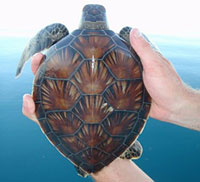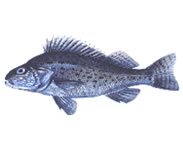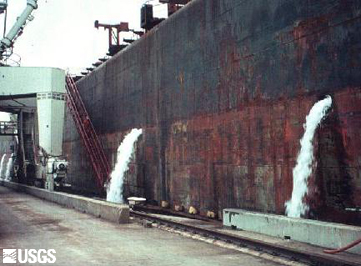- Home
- About S&T
- Taxa/Organisms
- Ecosystems
- Issues
- Methods & Tools
- Reports & Publications
- Location
- Search
Publisher: USGS | Science Center: USGS Other | Format: URL
nas.er.usgs.gov — This site has been established as a central repository for accurate and spatially referenced biogeographic accounts of nonindigenous aquatic species. The program provides scientific reports, online/realtime queries, spatial data sets, regional contact lists, and general information. The data is made available for use by biologists, interagency More...

Publisher: USGS | Science Center: Fort Collins Science Center (FORT, Ft. Collins) | Format: URL
www.fort.usgs.gov — The FORT research team will develop maps of invasive species at local, regional, and national scales and identify priority invasive species, vulnerable habitats, and pathways of invasion. County-level and point data on occurrence will be linked to plot-level and site-level information on species abundance and spread. Together, USGS, NASA, and CSU More...

December 2008 | Publisher: USGS | Format: URL
soundwaves.usgs.gov — Kristen Hart and Keith Ludwig of the USGS Florida Integrated Science Center (FISC) participated in two research cruises in 2008 to study patterns of habitat use by endangered sea turtles in and around the National Park. Hart's research effort focuses on quantifying patterns of sea turtle habitat use, employing capture-recapture and satellite- and More...

September 2008 | Publisher: Other Federal Agency (United States Forest Service (USFS)) | Format: .PDF
www.fs.fed.us — This review of information on relationships between wildland fire and nonnative invasive plants can assist fire managers and other land managers concerned with prevention, detection, and eradication or control of nonnative invasive plants. The 16 chapters in this volume synthesize ecological and botanical principles regarding relationships between More...

July 31 2007 | Publisher: Other Federal Agency (Center for Coastal Monitoring and Assessment (CCMA)) | Format: URL
ccma.nos.noaa.gov — This website is the entry point to data for the Mussel Watch, Bioeffects, and Benthic Surveillance programs. This resource links to the National Status & Trends Program fact sheet (pdf), and several projects including Mussel Watch, Benthic Surveillance, and Bioeffects Assessment. Users can also get general information about the Center for More...

2005 | Publisher: USGS | Science Center: Florida Integrated Science Center (FISC, Gainesville) | Format: URL
fisc.er.usgs.gov — This guide contains an identification key to the eleven foreign nonindigenous cyprinids, as well as species accounts that include physical characteristics, reproduction, ecology, and distribution in its native habitat and in the United States. Biologists, resource managers and others interested in nonindigenous fishes will find it a useful tool More...

Publisher: USGS | Science Center: Upper Midwest Environmental Sciences Center (UMESC, LaCrosse) | Format: URL
www.umesc.usgs.gov — Zebra mussels have caused drastic declines in native clam and mussel populations in some locations. Zebra mussels compete with other invertebrates and young fish for plankton, the primary food source for these groups. UMESC scientists are investigating the effects zebra mussels are having on the riverine ecosystem. This study examines the effects More...

Publisher: USGS | Science Center: Upper Midwest Environmental Sciences Center (UMESC, LaCrosse) | Format: URL
www.umesc.usgs.gov — Eurasian Ruffe pose a threat to native fish because they(1) mature quickly, (2) have a high reproductive capacity, and (3) easily adapt to new environments. Ruffe were first detected in western Lake Superior in 1986. UMESC scientists are conducting research on various types of piscicides (chemicals that kill fish). They are attempting to develop More...

Publisher: USGS | Science Center: Western Fisheries Research Center (WFRC, Seattle) | Format: URL
wfrc.usgs.gov — Ballast water discharges are the most significant cause of aquatic biological invasions in coastal waters, including the Great Lakes. Currently, treatment of ballast water prior to discharge at the receiving port offers significant promise to help control this problem. However, development of treatment technologies is limited by lack of objective More...

Publisher: USGS | Science Center: Forest and Rangeland Ecosystem Science Center (FRESC, Corvallis) | Format: URL
fresc.usgs.gov — Periodic fire is a natural part of sagebrush steppe ecosystems in the Great Basin. However, a suite of human-caused factors has dramatically changed fire regimes in many of these systems. Decades of fire suppression and livestock grazing have produced dense, single-aged sagebrush stands and invasion by cheatgrass (Bromus tectorum) has increased More...

Publisher: Other (National Invasive Species Information Center) | Format: URL
www.invasivespeciesinfo.gov — From the About NISIC. "The National Invasive Species Information Center (NISIC) was established in 2005 at the National Agricultural Library to meet the information needs of users including the National Invasive Species Council. ... NISIC creates and manages the www.invasivespeciesinfo.gov Web site. The Web site serves as a reference gateway to More...

Publisher: USGS | Science Center: Western Fisheries Research Center (WFRC, Seattle) | Format: URL
wfrc.usgs.gov — The objective of this research is to determine if symbiotic fungi are responsible for the invasiveness of plants in non-native habitats. One of the least studied but critical aspects of plant community structure and dynamics involves symbiotic interactions with endophytic and mycorrhizal fungi. In the last several decades it has become apparent More...
